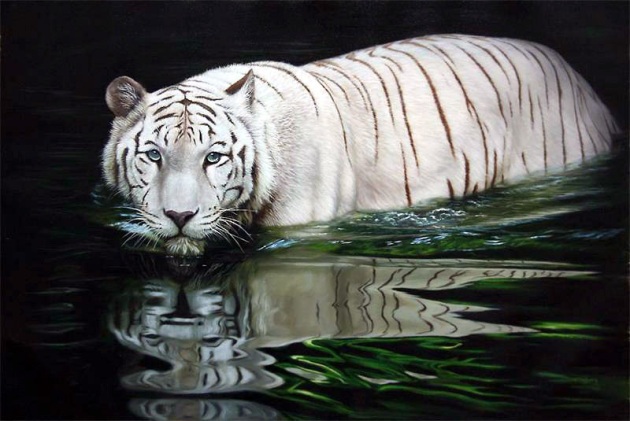Fine Art Giclee Prints, for Artists and Collectors
February 16, 2011 Leave a comment
I am asked about my fine art prints quite frequently from two different groups of people. Collectors and artists.
But both interested in the same thing – quality prints.
MANY years ago when I was first considering getting in to the print market I toyed with the idea of printing them myself, but that idea didn’t last long! Printing up to A3 in the studio is possible, and buying a good quality printer and paper / canvas is feasible. But most of my paintings are MUCH larger and then the specially designed giclee printer prices go WAY UP!
Then, if you’re an artist and you have the morals to supply your collectors a quality product, then you will be VERY concerned about producing a print that is UV resistant and won’t fade within a few weeks of the customer receiving it. So you will need to be using archival inks and also archival papers and canvases! And remember colour matched prints don’t just appear out of these expensive printers by accident, they need to be colour matched / fine-tuned until perfect. And that takes experience and time.
All that was enough to tell me that my time was going to be much better spent sticking to what I am good at – painting and leaving the printing up to the professionals! And that is when the fun REALLY began!
Any artist that has tried to find a reputable giclee print company will know that this in itself is a minefield! They all promise perfect colour rendition, quality, fast delivery etc but when you have placed your order and paid your money then, unfortunately, the promises usually start to be broken. I went through this disappointment for about 3 years with numerous companies before I finally hit on a company that was not only local to me (I had contacted companies the whole length of the UK!), but also as concerned about quality and colour rendition as I was with my wildlife prints!
I visited their company and learned what quality Giclee printing was really all about! I was amazed at the size of the printers, the digital scan back camera rendering images up to 380 megapixels! (Yes, you read that figure right!)
 scanback camera
scanback camera
Just one of the many printers
You see Giclee printing has now reached a level of permanence and perfection that no other print process can match. It is truly stunning when these machines are used by fully trained people.
The paper and canvas I use for my prints is produced by a company called Hahnemühle and it has been producing quality artist’s papers for over 420 years! Since its founding in 1584 they have developed experience and a tradition of excellence in art materials that is now been brought to the digital age, and fine art Inkjet printing.
And they have just raised the quality bar again by releasing their Leonardo Fine Art Canvas. It’s what I now use on all my new canvas prints! It’s probably the most expensive canvas I could use, which is a pain, but the quality is just superb. And I have demanded the highest standards since day 1.
So if you’re an artist, you have a decision to make, do you produce small prints yourself and hopefully sell at high volume or do you go the whole hog and contact a pro print company that can produce your prints at full size with the ultimate in quality and light fastness?
If you’re a collector you also have some decisions to make – will you be happy with an A4 or A3 print of a painting probably intended to be much larger? Do you take a chance that the artist or whoever has done the prints has used lightfast inks and paper / canvas or do you buy from artists like myself that pay a high premium to have their prints done to the very highest standards available today? Knowing that when cared for correctly the prints should last 100 years +
I’m biased of course, BUT in my eyes quality is King!
Some links for you –
The Fine Art canvas I use
The Dot Foundry Print House – the one I have used for years
A selection of my Wildlife Art prints wildlife art site











